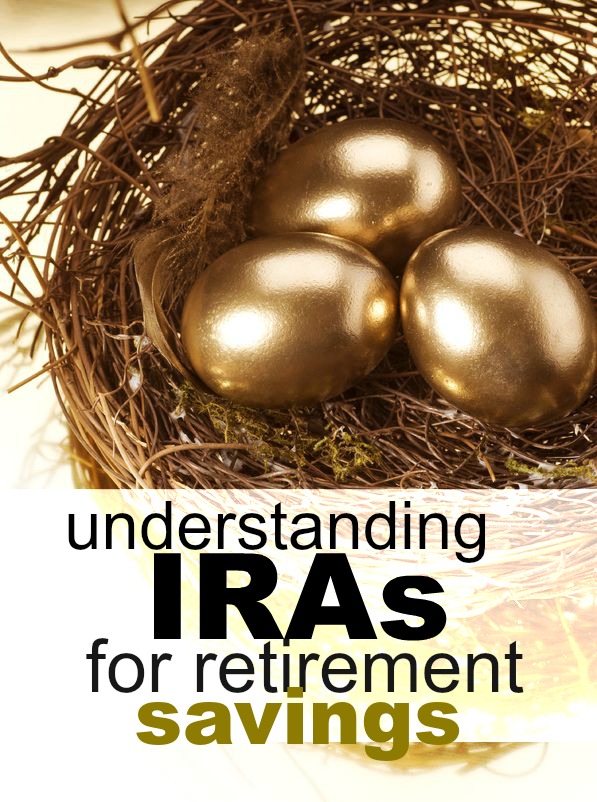IRAs, or Individual Retirement Arrangements, are important retirement savings vehicles. IRAs offer the potential for tax-advantaged saving, which is especially important for anyone without access to an employer-sponsored retirement plan.
In order to make IRAs easier to grasp, think of a book with a cover. The underlying investment is the book, while the IRA is the cover. The cover tells whoever looks at it what you would like them to know about the book inside, but it doesn’t change the book itself. In the case of investing, the cover is usually related to taxes. The type of “cover” you put on your investment tells the IRS how to treat it for tax purposes.
In an IRA, the “book” can be almost anything – the IRS excludes only collectibles and life insurance. Common choices are mutual funds, ETFs, stocks, or bonds. However, trustees are not required to offer every option, and your options will be limited to those offered by the institution you choose to invest with.
Traditional IRA
Anyone with income can invest in a Traditional IRA. Contributions to a Traditional IRA are tax-deductible, up to the limit set by the IRS. (For 2015, those limits are $5,500; $6,500 if you’re over age 50).
Qualified distributions from a Traditional IRA, are taxed as ordinary income, but money taken out before age 59 ½ will be subject to an additional 10% penalty on the full amount of the distribution. Traditional IRAs are also subject to RMDs, or Required Minimum Distributions, beginning at age 70 ½.
Depending on your income, your deduction limit may be lower if you or your spouse is covered by an employer retirement plan. For example, in 2015, a single person who is covered by an employer plan is eligible for a reduced deduction when income reaches $60,000, and no deduction at all once income reaches $70,000.

Roth IRA
The other type of IRA most people are familiar with is the Roth. Unlike Traditional IRAs, you may be not be able to contribute to a Roth IRA if your income is too high. You are eligible to contribute to a Roth IRA in 2015 if you are a single person making less than $131,000, or a married couple filing jointly making less than $193,000. (As you get close to the income limits, the deduction allowed begins to go down, so check the IRS website to determine your own eligibility.)
Contributions to a Roth IRA are made with after-tax dollars, and qualified distributions are tax-free. Additionally, contributions can generally be withdrawn without penalty at any time, which makes a Roth IRA more flexible than other retirement savings options. Earnings withdrawn before age 59 ½ are generally subject to income tax and a 10% penalty.
Unlike Traditional IRAs, Roth IRAs are not subject to distribution requirements during the lifetime of the account owner.
Additional Notes on Contributions and Distributions
There are a few other things to consider when looking at IRAs.
- The limit of $5,500 ($6,500 for age 50+) for IRAs applies to both Traditional and Roth IRAs, so if you contribute to both in the same year, your total IRA contribution cannot exceed the limit.
- IRA contributions made before April 15th may be allocated to the previous tax year. This can be especially important for those with variable income, if income is higher than anticipated in the first part of a given year.
- If you exceed your contribution limit in either type of IRA, the excess amount will be subject to a 6% tax, so be sure to keep track.
- There are circumstances where a qualified withdrawal may be taken before age 59 ½. These include, but are not limited to, certain medical expenses and the purchase of a first home.
Making the right choice
We’ve gone over some of the basics of Traditional and Roth IRAs, but making the choice can be a bit more complicated. As with all financial decisions, it’s best to deal with actual numbers. Use your current income, tax bracket, and assumed investment returns to perform a simple calculation. If that’s not your cup of tea, anticipate another post from me on this subject, where we’ll dive in to specific examples to help you determine the best course of action.

Kate!
You have to reference Kevin’s video on this! It is truly the best Traditional IRA verses Roth IRA video on the web!!! Several years ago, when there was a push to educate the public something like a hundred PF bloggers pushed IRAs on the same day– and it was amazing how many of them made direct links to that video!
Looking forward to your follow-up post!